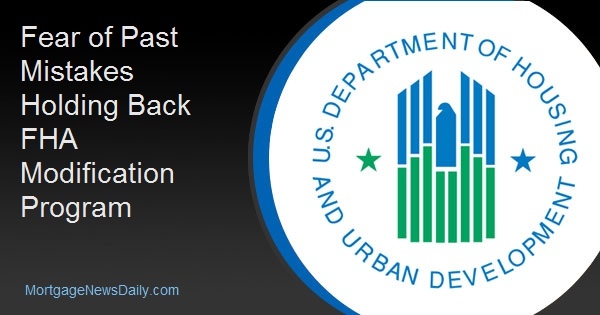The days when published a monthly tally of the number of loan modifications made by servicers under several public and private sector programs are long gone, but modifications are still needed and memories of the missteps and chaos that accompanied the process linger. The recent assessment by the Consumer Financial Protection Bureau (CFPB) of their post-crisis rules for mortgage servicers indicate there were lessons learned, but maybe not enough of them.
Four Urban Institute analysts* suggest, in a recent article in the Institute's Urban Wire blog, that the FHA still allows and/or requires its servicers to employ some loan modification guidelines and procedures that are cumbersome, maybe even nonsensical for borrowers and increase costs for servicers.
Borrowers applying for loan modifications with FHA are required to provide information about household finances, including income and expenses. The rules require expense documentation which can include physical receipts for day-to-day purchases such as groceries, gas, and pharmaceuticals. Households typically don't save receipts and many low and even middle-income families don't use credit cards or have checking accounts which might provide a backup source of documentation. Even if they can come up with the receipts there is the added burden of faxing, mailing, or scanning them to the servicer - stressful for some and probably necessitating an out-of-pocket expense.
This requirement can delay or even prevent a borrower from getting a modification for which they otherwise qualify and could cost the servicer money. UI suggest this requirement is unnecessary; borrower expenses play a minor role in the loss mitigation evaluation waterfall used by the Department of Housing and Urban Development (HUD) and are not used to calculate the monthly mortgage payment under a modification. It would make sense for HUD to eliminate the requirement.
If that isn't possible, an alternative would be to adopt the Internal Revenue Service's Collection Financial Standards which provide monthly allowances for living expenses. HUD's 2016 guidance already refers to these standards but does not instruct servicers to use them. Using the IRS numbers for food, personal care, clothing, and other necessities would do away with any need for documentation in most cases and provide clarity for borrowers and servicers.
Another burdensome requirement is the provision of documentation to establish hardship. Servicers have delegated authority to request the proof they deem necessary, but UI says hardship often arises over an extended period and perhaps with more than one cause. When a borrower gets to the point of needing assistance the journey to that point maybe impossible to document.
Again, UI maintains there is a simpler solution. The Treasury Department's Home Affordable Modification Program (HAMP) used the GSEs' Form 710 to gather evidence of borrower hardship over the ten years the program existed. This standard hardship affidavit provides 10 options for hardship to help borrowers explain complicated situations.
UI concludes that HUD's loss mitigation documentation requirements are well-intentioned guidelines to help struggling borrowers while minimizing losses for the FHA. At the same time, the massive scale of the FHA program necessitates policies that maximize the number of borrowers assisted. Borrower advocates and servicer members of the Mortgage Servicing Collaborative agree that these documentation requirements have erected unnecessary barriers for struggling borrowers seeking mortgage assistance and believe that adopting the changes described in this blog post would be a positive step in that direction.
*Karan Kaul, Laurie Goodman, Alanna McCargo, and Todd M. Hill-Jones







